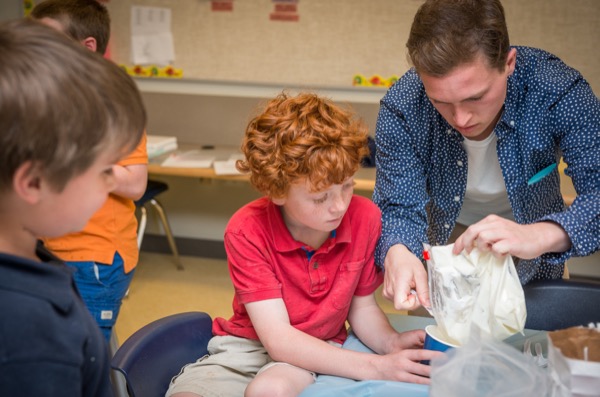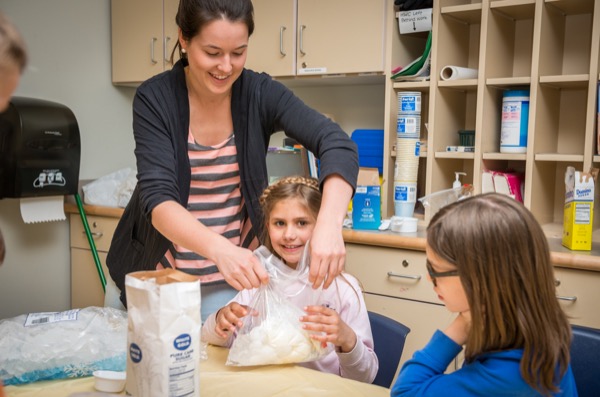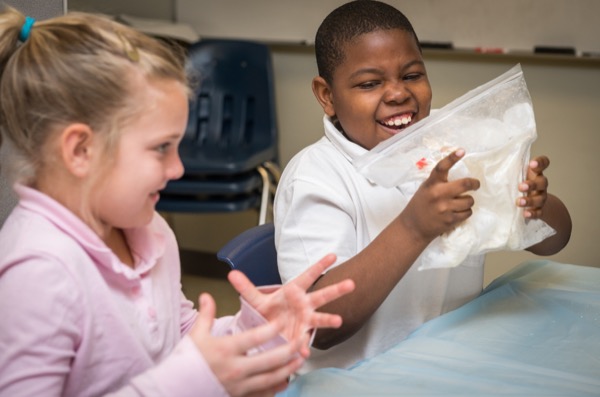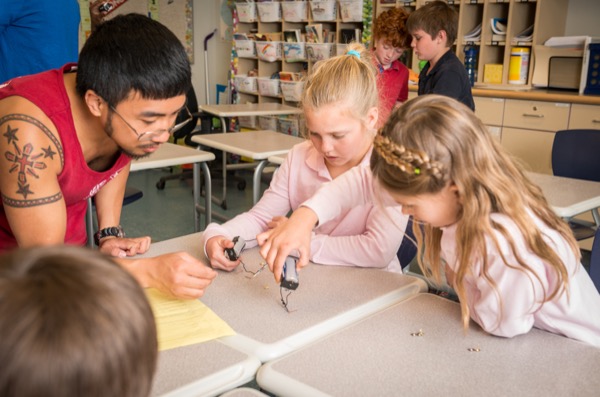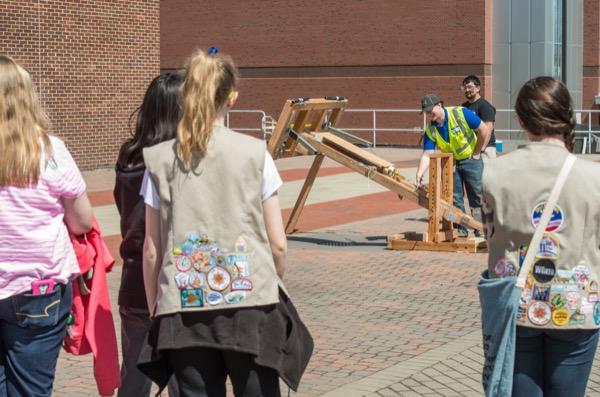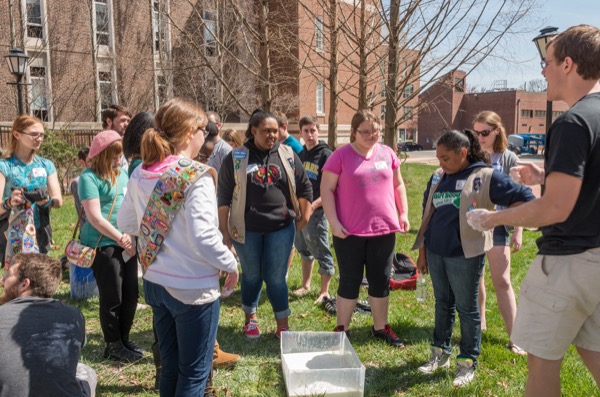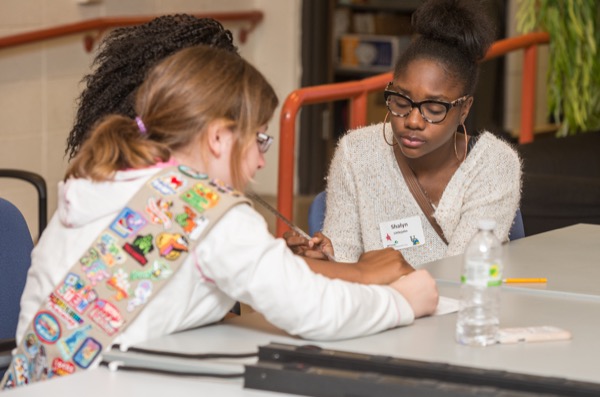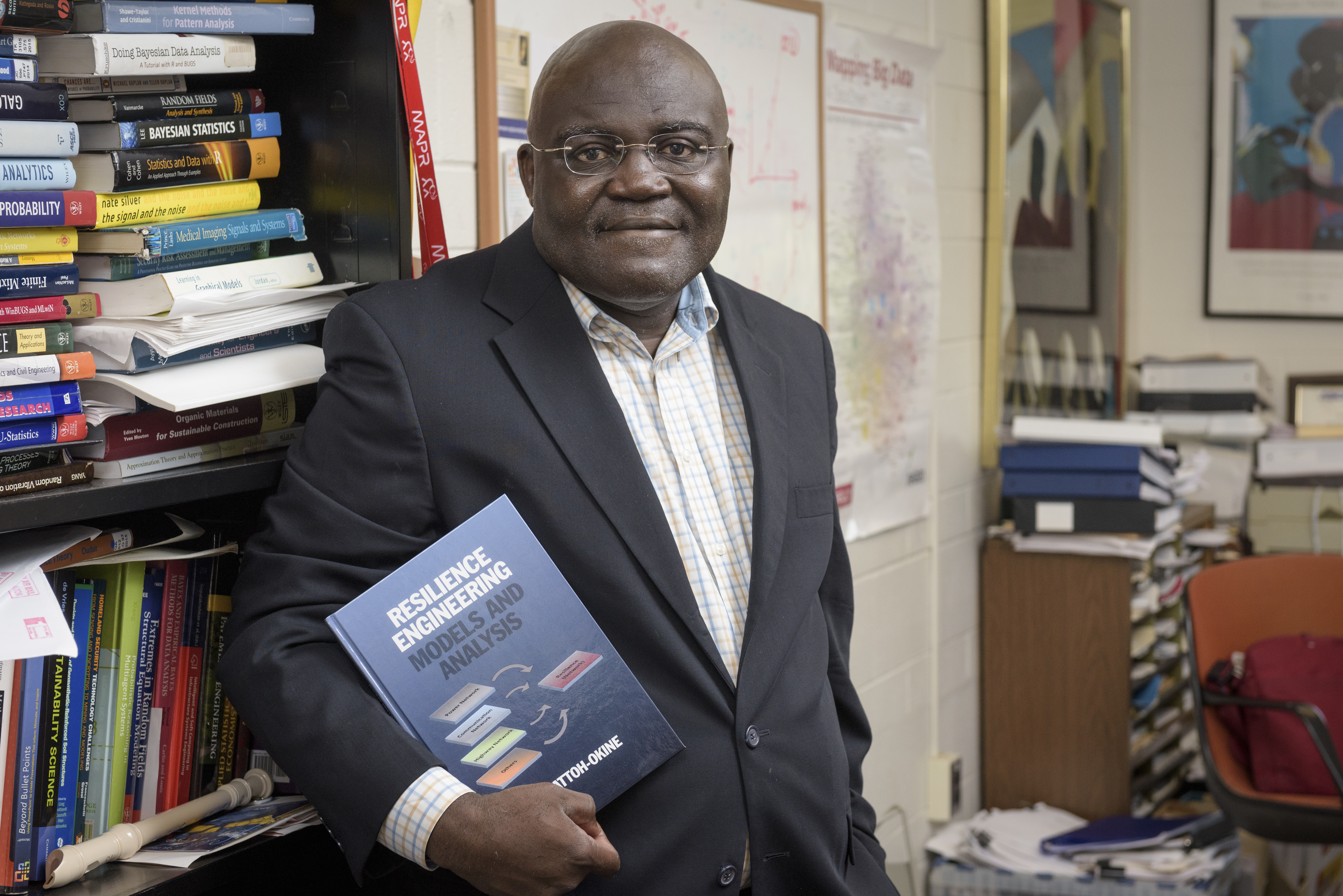

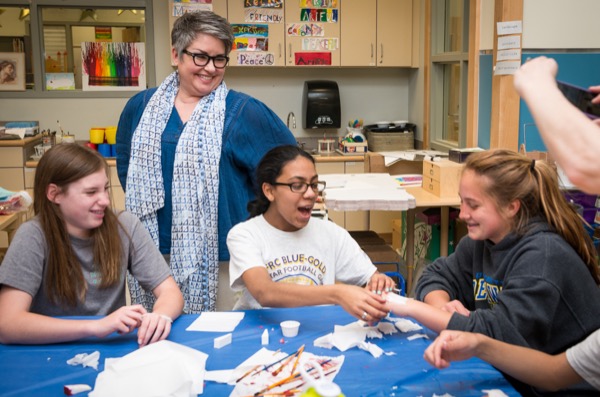
DIY ice cream
UD engineering students reach out, host STEM events for youths
12:51 p.m., April 27, 2015--For some kids, there’s only one thing more fun than eating ice cream, and that’s making their own.
Students in The College School at the University of Delaware recently had the opportunity to create their own version of the tasty treat during a STEM Expo held on Wednesday, April 15.
People Stories
'Resilience Engineering'
Reviresco June run
The event grew out of a commitment by members of the Deep Roots Outreach Program (DROP), a registered student organization organized to reach out to younger generations and get them interested in the science, technology, engineering and mathematics related fields. The American Institute of Chemical Engineers student organization also contributed to the science fair.
“We bring an exciting twist to learning, and we combine interactive experiments with meaningful discussions,” said DROP co-founder Nickolas Martin, a junior chemical and biomolecular engineering major from Norwood, Massachusetts.
Juniors Brian Dinkelacker of Fogelsville, Pennsylvania, and Lindsay Kelly of Princeton Junction, New Jersey, also studying chemical and biomolecular engineering, guided the second and third grade students who sat, stood, twisted and laughed while mixing, shaking and pounding half and half cream, sugar, vanilla, salt and ice during a fun-filled hands-on experience.
The results, which the children got to sample, ranged from near gourmet consistency to more fluid versions as the class made the most of it, with one youngster happily exclaiming, “This makes a good milkshake.”
“This is a lot of fun for us and the kids,” Kelly said. “They are very enthusiastic about what they are doing.”
Although it might have seemed like organized mayhem, the students actually were learning the science behind making ice cream.
“This is the first station for my group,” Gillian Guadagnino, lead teacher, said. “The event is very well organized and the kids are actually learning science at the same time.”
Other stations afforded youngsters the opportunity to learn the science behind making boats, bouncing polymer balls, electro-chemistry, simple motors and creating zombie wounds.
“The idea is to make zombie wounds like the makeup people in the movies do,” said Diane Lawler, artist-in-residence at The College School. “They put on a thin layer of latex, then glue tissue paper on top of that, paint the paper, and use a hair dryer to make it all come together.”
Martha McDonough, The College School-UD coordinator, said the children get special treatment because the school is located on the University campus.
“The engineering students are doing all of this today, and it fits perfectly for us at The College School,” McDonough said. “We have such great kids, and they just love being with the college students.”
Children at all the stations were quite energetic and enthusiastic about their experiences, said Trishelle Copeland-Johnson, a doctoral student in chemical and biomolecular engineering from Apopka, Florida.
“The goal is to get students exposed to different concepts in science and pique their interest,” Copeland-Johnson said. “Hopefully, this will lead to a science and engineering career path for them.”
Loreto (Vito) Casuga, a junior mechanical engineering major from New Castle, Delaware, showed students how to wrap a thin wire around a nail to make a battery-powered electric magnet.
“This is a way to get students to understand the way energy runs through a circuit,” Casuga said. “They also learn about thermodynamics and how energy can be heat or magnetism.”
DROP members all major in STEM-related fields, including Martin, who became interested in science at an early age.
“When I reached middle and high school, I noticed that there was not as much of an effort to get myself and my peers interested in the STEM fields,” Martin said. “Thankfully, my strong interest for math and the sciences persevered through the extracurricular activities I sought out myself. Had it not been for this, my curiosity would have diminished and I probably would not be majoring in the sciences.”
Richard Sherrer, president of DROP, and a senior chemical and biomolecular engineering major from Landing, New Jersey, said his involvement grew from reaching out to Martin in planning an activity with children at the Nemours/Alfred I. duPont Hospital for Children in Wilmington.
“I became part of the crew that created DROP and then became its president because I felt that this club could blossom into something amazing,” Sherrer said. “I wanted to be a major part of that.”
Fellow DROP volunteers all share the same love of bringing the principles of science to students of all ages, Sherrer said.
“I love working with kids in general because they are always full of curiosity and genuinely like learning,” Sherrer said. “The kids at the College School were no exception, and it was great working with them and showing them the amazing things that STEM fields have to offer them.”
Girl Scouts and engineering
DROP members also helped sponsor Girl Scouts Engineering Day, held Sunday, April 12, at various campus locations.
Lauren Cordova, a senior in the College of Engineering from Hockessin, Delaware, and treasurer of the Society of Women Engineers (SWE) student organization, said that 33 scouts from the New Castle County area in the Girl Scouts of the Chesapeake Bay Council participated.
The event consisted of four stations featuring biomedical, chemical, civil and mechanical engineering themes.
“The biomedical station involved a model of the tendons and ligaments in the knee provided by the Orthopaedics in Action program,” Cordova said. “The chemical engineering station presented a short video explaining shear-thickening fluids, and the Girl Scouts taking part were allowed to put their hands in a pool of corn starch and water.”
At the mechanical engineering station, a giant crossbow, or ballista, was used to shoot water balloons a distance of about 20 feet. The civil engineering station engaged the girls in an exercise to construct towers with toothpicks, spaghetti and miniature marshmallows, Cordova said.
“The girls all had a great time, and the favorite was the shear-thickening station,” Cordova said. “They really liked getting their hands dirty and playing with the compound that acts like a solid or liquid, depending on the applied force.”
Cordova said that her favorite part of outreach events, including Girl Scouts Engineering Day, is watching young women be excited by science.
“Females are still underrepresented in the engineering disciplines, and events like these are critical to increase awareness,” Cordova said. “I am passionate about science and engineering and love sharing this passion with younger students in the hopes that they join the STEM field.”
Article by Jerry Rhodes
Photos by Kathy F. Atkinson




